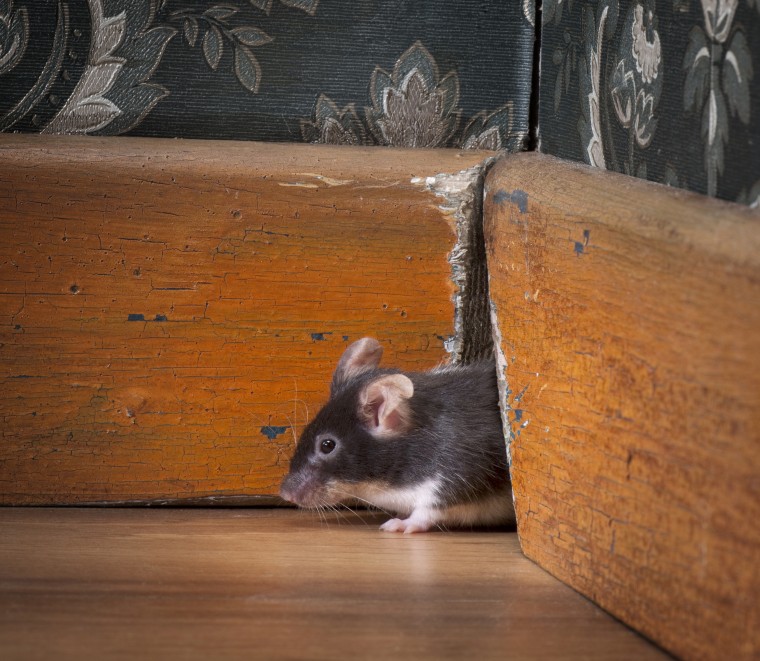Mice found in apartment buildings across New York City carry disease-causing bacteria, including a few superbug germs, researchers reported Tuesday.
The mice seem to be getting these germs from human trash — specifically from food that people throw out. But it’s entirely possible that they could transmit these bacteria right back to their human landlords, the team at Columbia University said.
And these mice are not living only in poor neighborhoods.
“We found them throughout the city,” said Ian Lipkin, director of the Center for Infection and Immunity at Columbia University’s Mailman School of Public Health, who led the study.
“We found them in wealthy areas and we found them in not-so wealthy-areas.”
It’s possible that the mice are a reservoir for disease-causing bacteria, including superbugs, Lipkin said, although the team did not show this.
As researchers look, they’re finding these antibiotic-resistant germs across the country. Many carry the genes that give them superpowers to fight off antibiotics in little cassettes of DNA that they can swap and share with other bacteria, even other species of bacteria.
Lipkin’s team examined 416 mice collected from the Bronx, Manhattan, Brooklyn and Queens. They examined the mice directly, as well as their droppings and urine.
“Most of the trapping we did was located in proximity to garbage pails and trash compactors in large apartment buildings."
“We trapped wild house mice inside multiunit residential buildings in NYC and surveyed them for the presence of pathogenic bacteria and AMR (antimicrobial resistance) genes,” they wrote in their report, published in the journal mBio.
“We found Shigella, Salmonella and C. difficile, as well as certain types of E. coli that are associated with severe diarrheal illness,” Lipkin said. “We also found Leptospira, which causes unexplained fever.”
Three percent of the mice carried Salmonella bacteria, 14 percent carried disease-causing Shigella, 12 percent carried the food poisoning germ Clostridium perfringens, 4 percent carried enteropathogenic Escherichia coli and 4 percent carried Clostridium difficile, a notorious cause of often-fatal chronic diarrhea.
As anyone who has fought off a mouse infestation can testify, mice leave their droppings everywhere they scurry. They also leave a more invisible trail of urine, which can also spread germs.
The researchers found the bacteria in the pellets of the mice, as well as in and on their bodies. They found Leptospira in their kidneys.
“These bacteria carried genes that confer resistance to some of the drugs that are absolutely critical to our antibiotic armamentarium,” Lipkin said. These include the classes of drugs called fluoroquinolone and the beta-lactamases. “This is a potentially serious problem,” he said.
“I can’t say that I am surprised that these animals have these bacteria or that they have antibiotic-resistant bacteria. Nevertheless, it is important to look.”
Mice 'live with us'
The good news is that the New York City mice did not carry disease-causing viruses. A second survey found they did carry viruses, including some previously unknown to science, but none known to make people sick. Other species of mice can carry hantaviruses, which they spread in their urine and which can cause deadly lung infections.
Lipkin’s team alarmed New Yorkers in 2015 with a study of the germs that rats carry. But he says mice are even more important.
“New Yorkers tend to focus on rats because they are larger and we see them scurrying around in streets or subways,” he said.
“However, from a public health vantage point, mice are more worrisome because they live indoors and are more likely to contaminate our environment, even if we don't see them,” he added. “They live with us. They eat our food.”
What can people do?
Make sure food is in mouse-proof containers, for one. That includes garbage.
“Most of the trapping we did was located in proximity to garbage pails and trash compactors in large apartment buildings,” he said. “People put everything into these. There’s going to be fruit and old bread and all kinds of things. There is plenty of opportunity for infection and for bacteria to remain behind.”
Plus, people need to control rodents. And if there is evidence rodents have been in a home, cleaning up with germ-killing products such as bleach.
“A lot of this is common sense,” Lipkin said.



